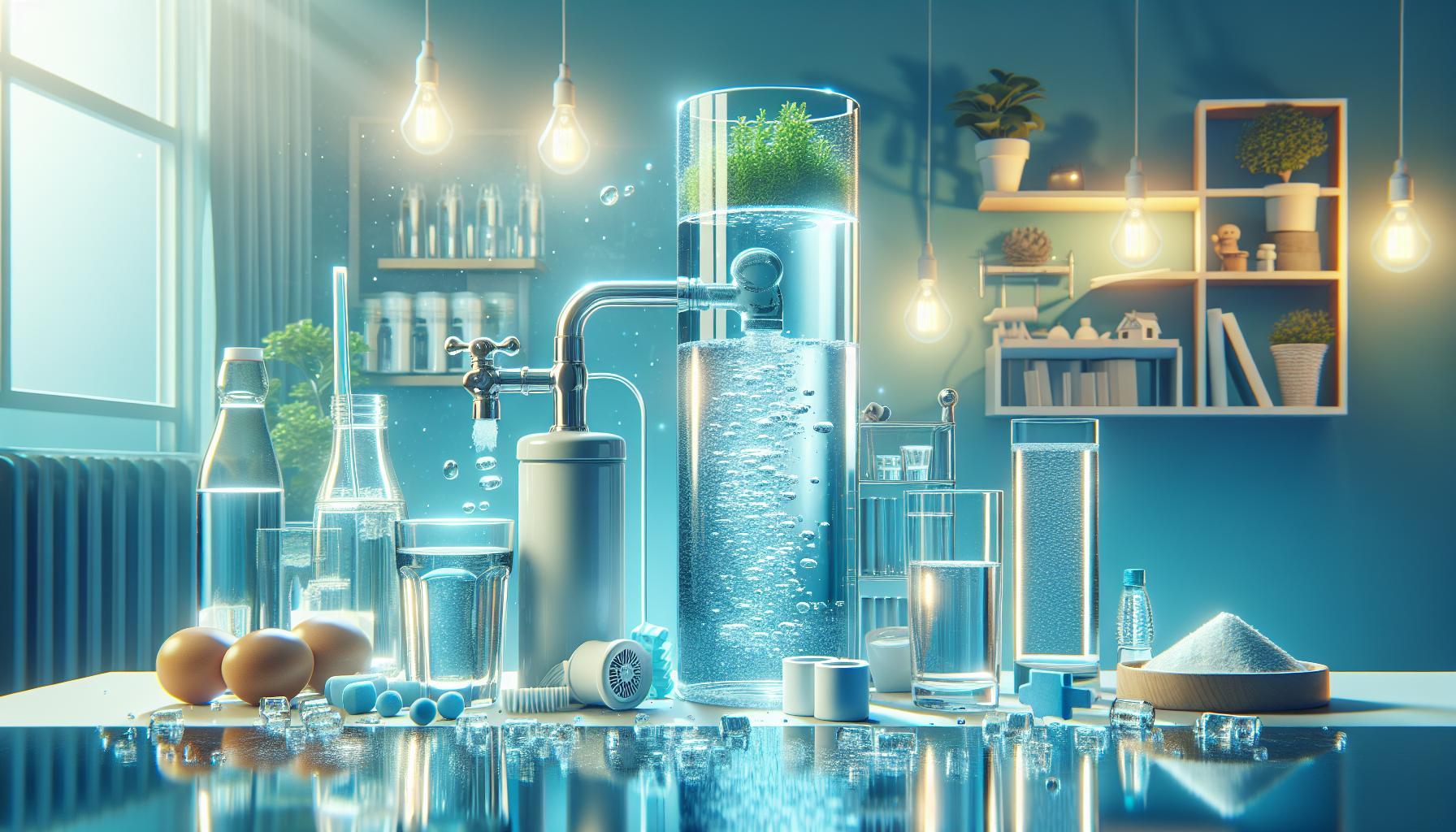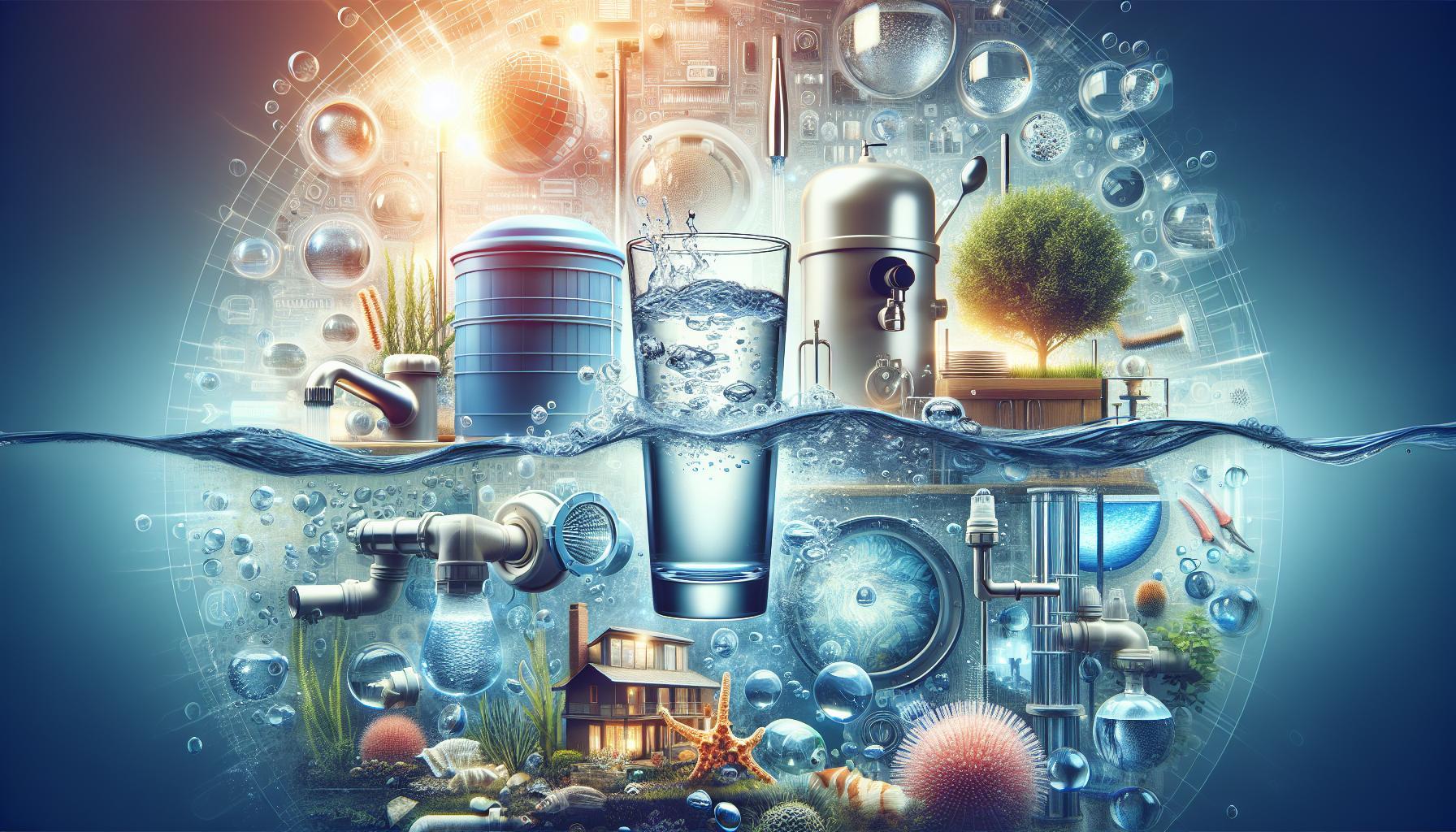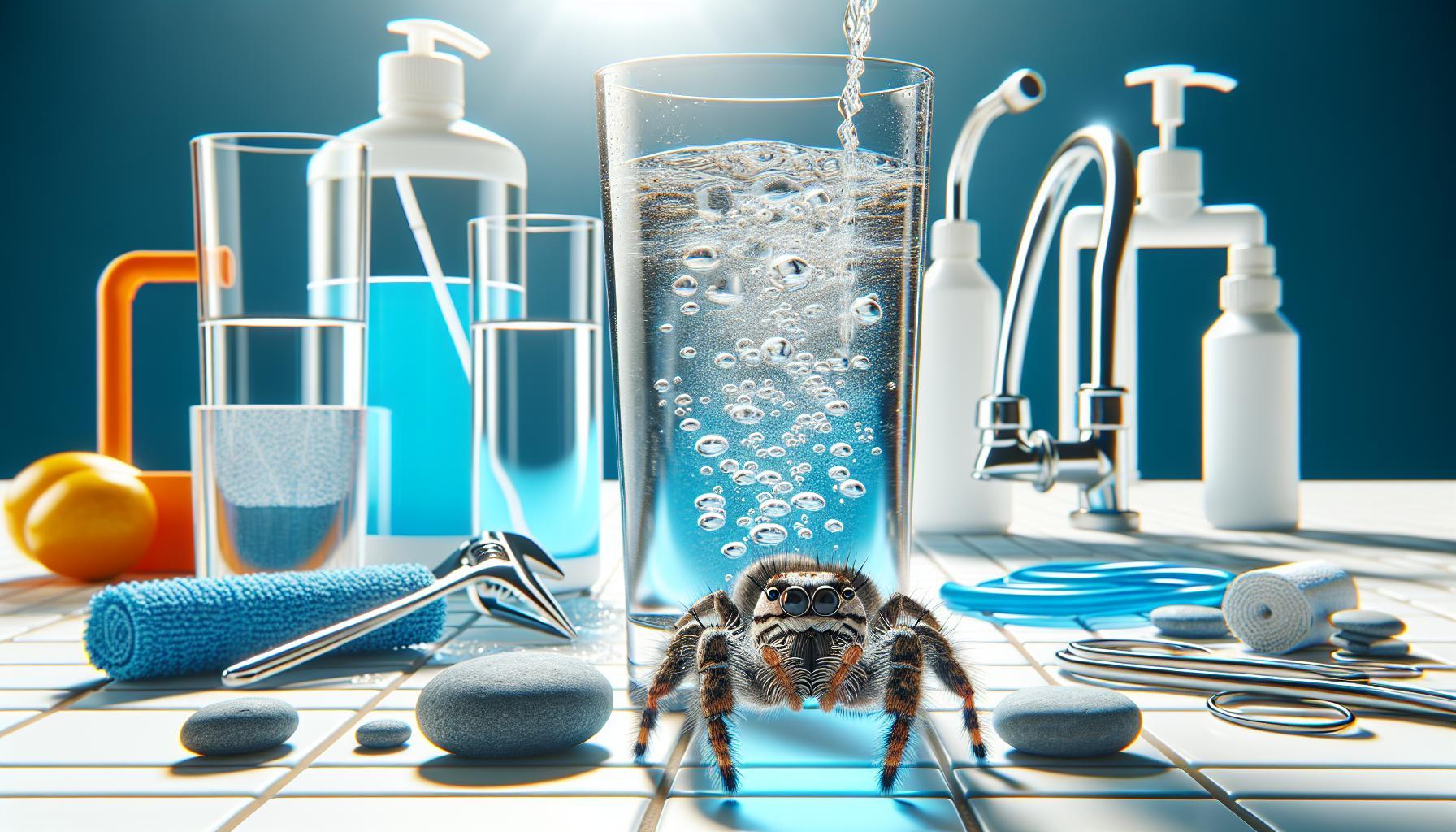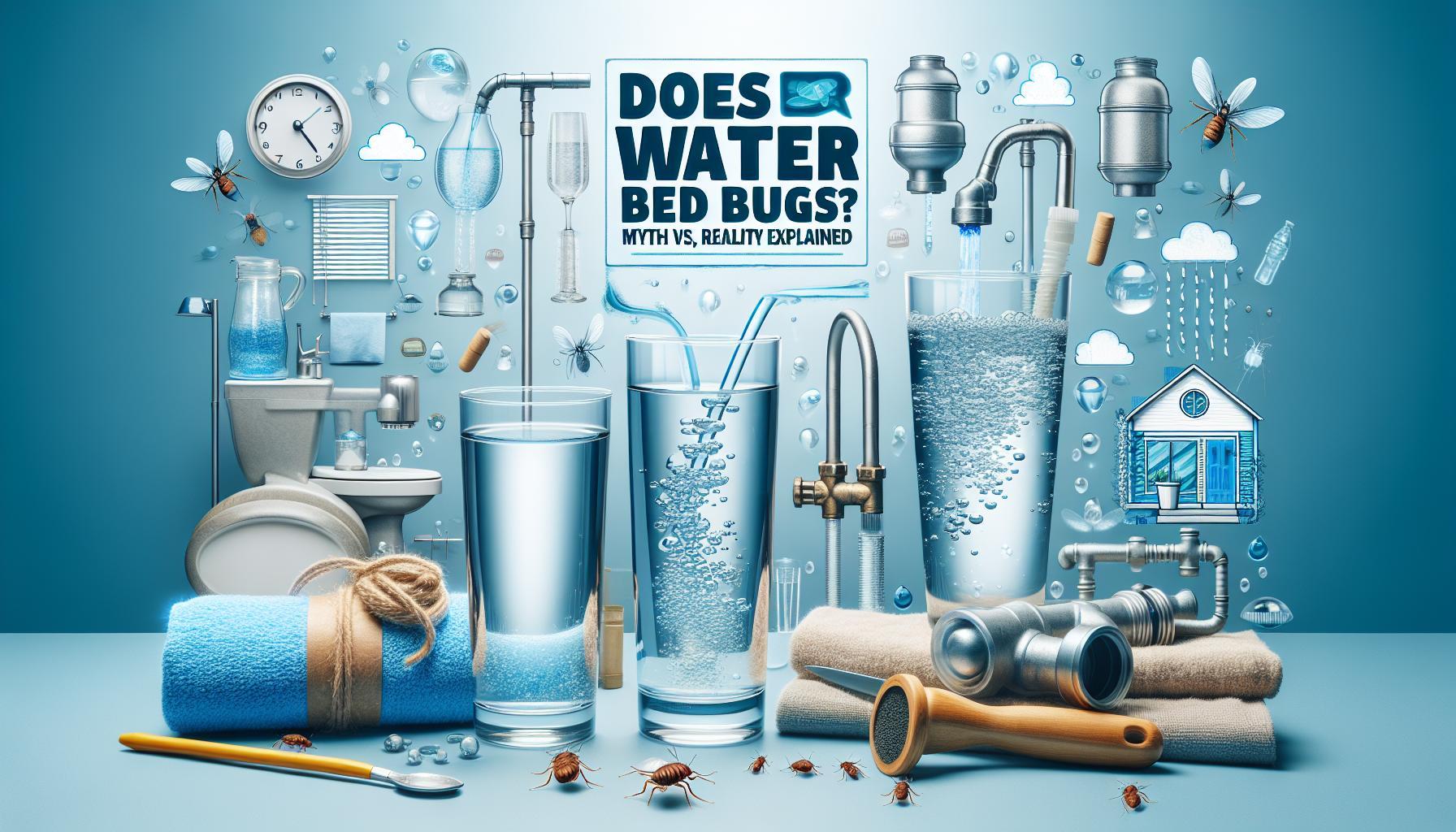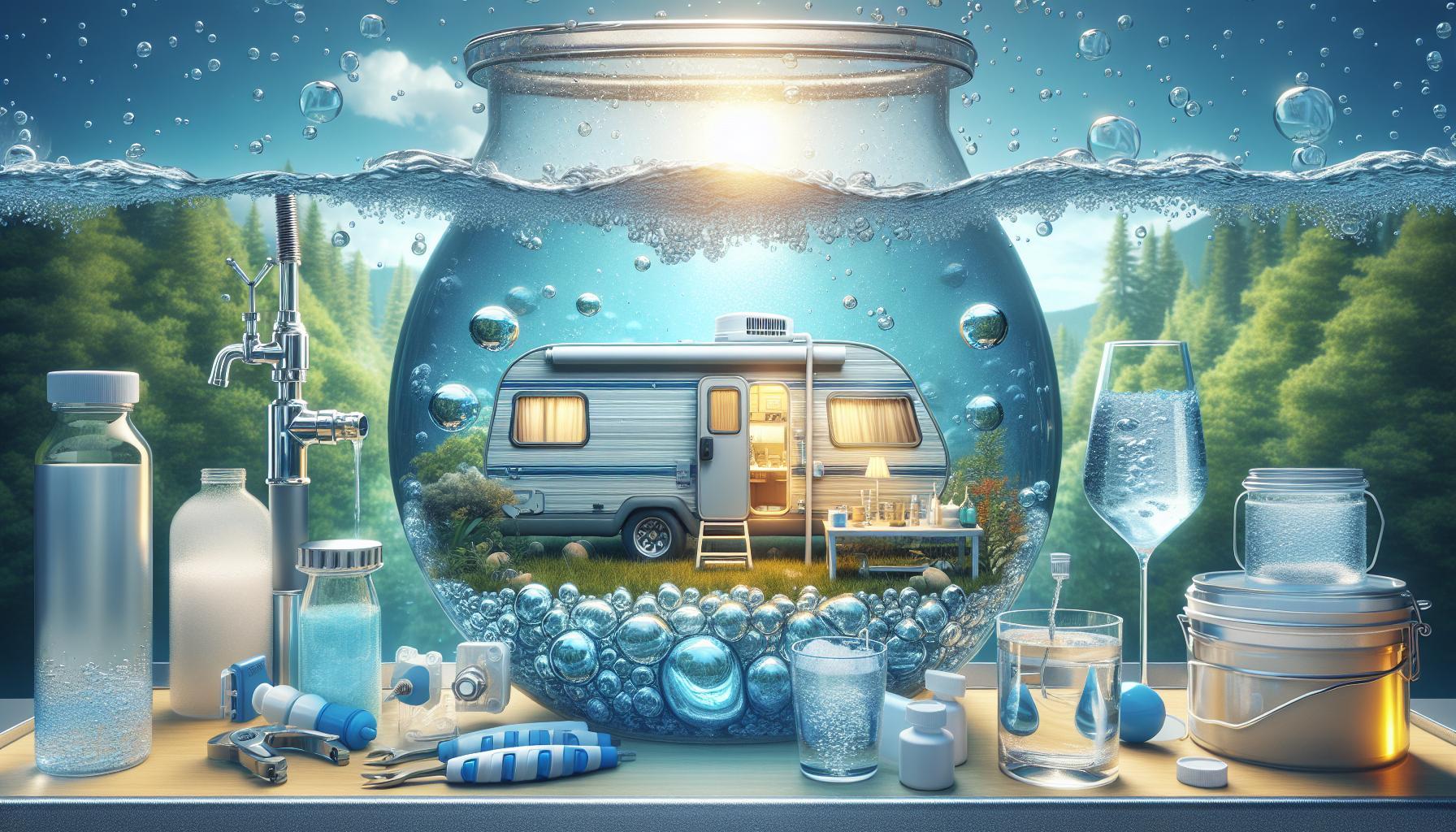When it comes to ensuring safe drinking water, many consumers are left wondering about the presence of chlorine in purified varieties. Understanding whether purified water contains this common disinfectant is crucial for health-conscious individuals. Generally, purified water does not contain chlorine, as the filtration processes effectively remove impurities and chemicals, providing a cleaner, healthier alternative for hydration.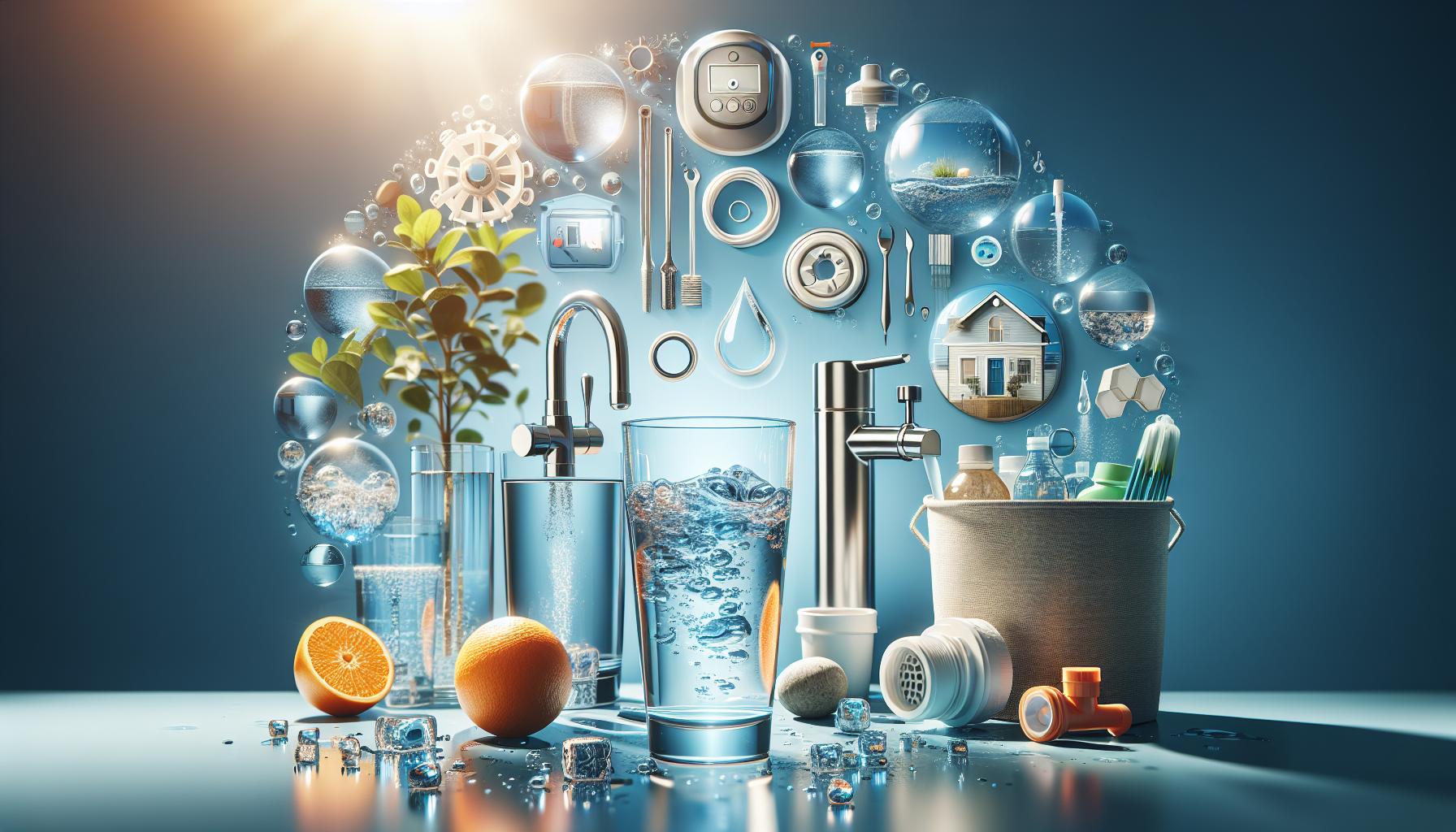
Understanding Purified Water: What It Is and How It’s Made
Water is essential for life, but not all water is created equal. Purified water, in particular, has been treated to remove impurities, making it a popular choice for those seeking clean drinking options. This process can significantly enhance its safety and taste, appealing to health-conscious consumers. In the context of understanding purified water, it’s essential to explore what distinguishes it from other types of water, including whether it contains chlorine, which is often used as a disinfectant in municipal water supplies.
Purified water undergoes various treatment methods to eliminate contaminants, making it safe for consumption. The most common purification techniques include:
- Reverse Osmosis: This process forces water through a semipermeable membrane, effectively removing a wide range of impurities, including salts, organic molecules, and heavy metals.
- Filtration: Basic filtration involves passing water through filters that capture particles and debris.
- Distillation: This method boils water to create steam, then cools it back into liquid form, leaving contaminants behind.
- UV Sterilization: Ultraviolet light is used to kill bacteria and viruses, thereby ensuring microbiological safety.
Each of these purification methods has its own set of advantages, and often a combination of techniques is employed to achieve the highest quality of water. Filtered and distilled water are common types of purified water, both benefitting from thorough treatment processes that also aim to enhance taste by eliminating substances like chlorine, which can impart an unpleasant flavor. Understanding these methods is pivotal for anyone considering drinking purified water, especially if they are concerned about chemical additives typically found in other water sources.
When considering the question of whether purified water contains chlorine, it’s important to note that the purification process itself is designed to remove chemical contaminants. Thus, purified water, as defined, typically does not contain chlorine or any other harmful additives. However, if you are sourcing purified water from municipal supplies, always check for certification and testing results to ensure its purity. This scrutiny helps distinguish products that adhere to high safety standards from others that may not provide the same assurances.
The Role of Chlorine in Water Treatment: A Necessary Step
The use of chlorine in water treatment is a cornerstone of public health practices worldwide. This powerful disinfectant is instrumental in transforming potentially hazardous water into a safe resource for consumption. Chlorine doesn’t just kill harmful pathogens; it also provides a residual effect that continues to protect water as it travels through distribution systems. The question often arises: does purified water contain chlorine? Understanding the role of chlorine can help clarify this issue.
Why Chlorine is Essential
Chlorination plays a vital role in ensuring that drinking water is free from disease-causing microorganisms. By effectively eliminating bacteria, viruses, and protozoa, chlorine reduces the risk of waterborne diseases that can have severe health impacts on communities. This preventive measure is particularly crucial in areas where water sources are more susceptible to contamination.
- Oxidation of Contaminants: Chlorine works by oxidizing contaminants such as iron and manganese, helping to remove unpleasant tastes and odors from the water.
- Color Removal: The addition of chlorine can aid in reducing color in the water, resulting in clearer, more appealing drinking water.
- Cooperation with Other Processes: Chlorine enhances other water treatment processes, such as sedimentation and filtration, making these systems more effective overall.
Regulatory Limits and Health Considerations
Despite its benefits, the use of chlorine does come with some caveats. Chlorination can lead to the formation of disinfection byproducts (DBPs), which are compounds that may pose health risks when consumed over long periods. The Environmental Protection Agency (EPA) has established strict guidelines and limits for several types of DBPs to minimize these risks. Consumers often wonder, “Does purified water have chlorine?” The answer largely depends on the purification process employed. Some purification methods, such as reverse osmosis or distillation, can remove chlorine, while others may retain some level of chlorine for safety and stability.
| Disinfection Byproducts (DBPs) | Potential Health Effects |
|---|---|
| Trihalomethanes (THMs) | Increased risk of cancer, damage to liver and kidneys |
| Haloacetic acids (HAAs) | Potential developmental and reproductive risks |
As we explore whether purified water contains chlorine, it’s essential to weigh the safety benefits of chlorination against its potential drawbacks. With proper regulation and treatment processes, chlorine remains a necessary and effective tool in the quest for safe drinking water, safeguarding community health while addressing various water quality concerns.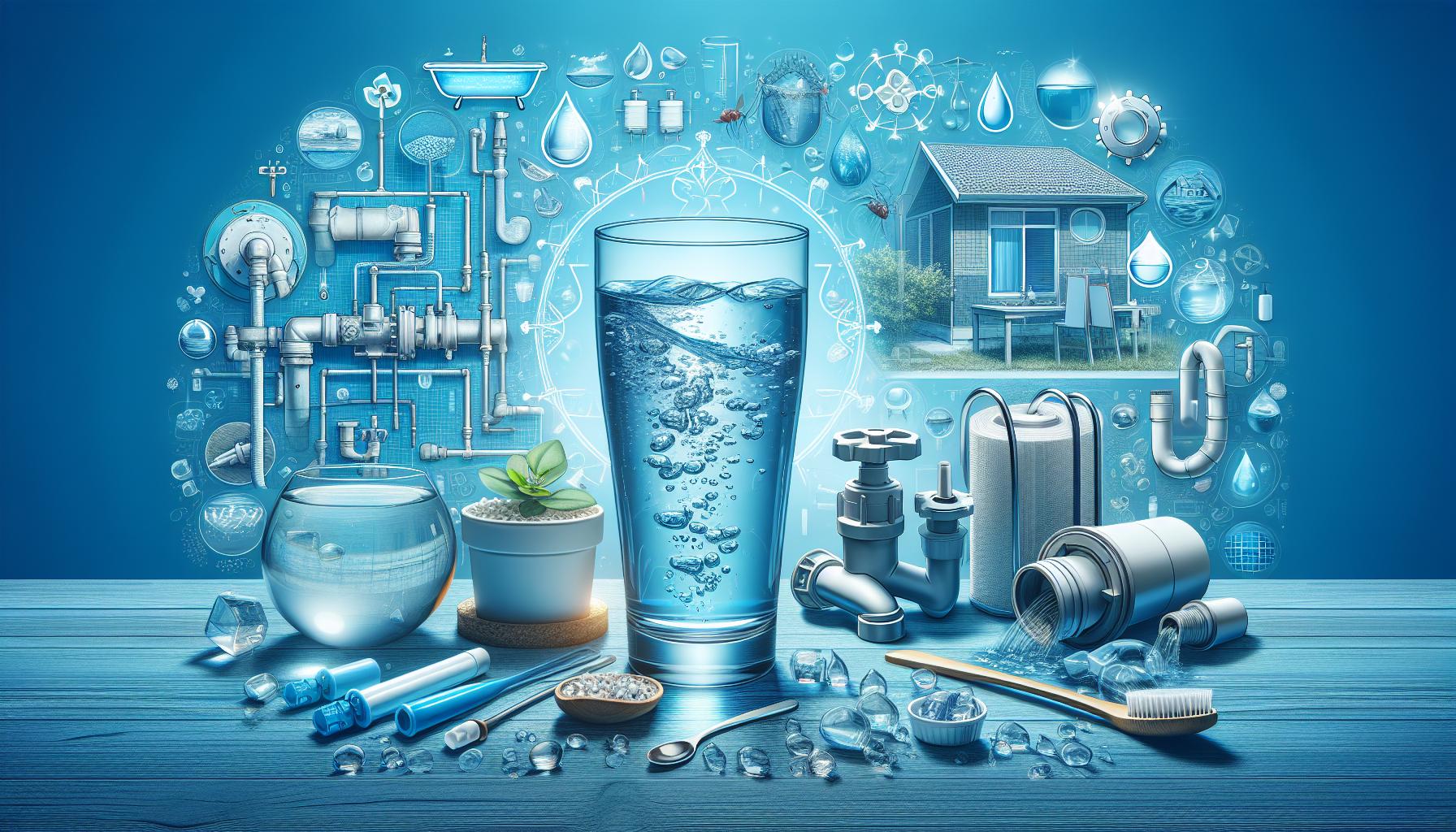
Does Purified Water Contain Chlorine? Debunking Common Myths
When it comes to the purity of drinking water, many misconceptions persist, particularly regarding the presence of chlorine in purified water. In reality, purified water undergoes a rigorous filtration process that typically removes chlorine, which is commonly added to municipal water supplies for disinfection purposes. Understanding these processes is crucial in debunking common myths surrounding this pivotal topic.
One reason for confusion is the varying definitions of purified water. Purified water is created through methods like distillation, reverse osmosis, and deionization, all of which effectively eliminate a wide array of contaminants—including chlorine. This implies that purified water is free from the harsh taste and smell associated with chlorine, providing a more enjoyable drinking experience. Consumers looking for healthier hydration options will find that purified water not only tastes better but also lacks the chemical additives commonly found in tap water.
Understanding the Removal Process
The processes associated with purification function to eradicate any chlorine residues that may have been present prior. For instance, in reverse osmosis systems, water is forced through a semipermeable membrane that captures chlorine along with other unwanted substances. Similarly, during distillation, water is boiled, and the vapor is collected, leaving behind impurities, including chlorine. As a result, purified water is considerably safer and more palatable than regular tap water.
For those concerned about water quality, it’s beneficial to look for products that explicitly state “purified” on the label. Conducting a taste test can also highlight the differences; purified water often has a crisp, clean flavor compared to the chlorinated taste of municipal sources. For added assurance, utilizing home water testing kits can further confirm the absence of chlorine and other contaminants.
In summary, the claims that purified water contains chlorine are unfounded. By choosing purified water, one can enjoy not only better taste but also the peace of mind that comes with drinking cleaner, healthier water.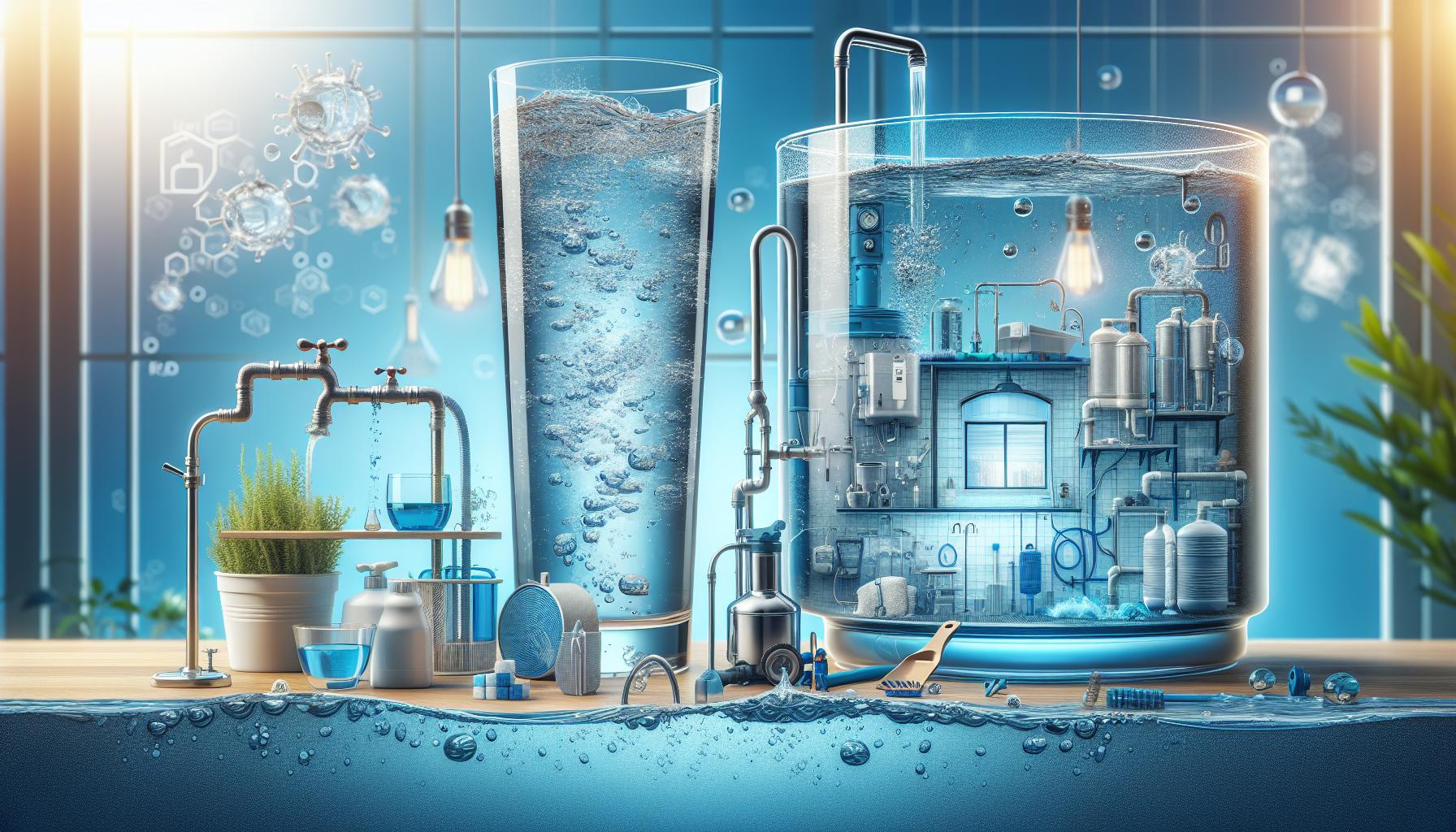
How Different Purification Methods Affect Chlorine Levels
Understanding how various purification methods impact chlorine levels in water is essential for consumers aiming for the healthiest drinking solution. Many people question, “Does purified water have chlorine?” To answer this, we must explore the role of different purification techniques and their effectiveness at removing chlorine.
Common Purification Methods
Several methods are commonly used to purify water, and each has a distinct impact on chlorine levels:
- Activated Carbon Filtration: This method excels at removing chlorine, thanks to the porous nature of activated carbon, which adsorbs impurities. Studies have shown that activated carbon filters can reduce chlorine levels by over 90%.
- Reverse Osmosis (RO): RO systems not only filter out chlorine but also a wide range of contaminants, improving the overall purity of water. While they are highly effective, they require regular maintenance to ensure optimal performance.
- Distillation: Distillers boil water and capture the steam, leaving behind chlorine and other impurities. However, this method may not eliminate all chlorine byproducts unless additional filtration is applied.
- Ultraviolet (UV) Purification: While UV light is effective at disinfecting water, it does not specifically target chlorine. Thus, pairing UV purification with a filtration method is recommended for those concerned about chlorine levels.
Comparative Analysis of Chlorine Removal
To better understand the effectiveness of these methods, consider the following comparative analysis:
| Purification Method | Chlorine Removal Efficiency | Additional Benefits |
|---|---|---|
| Activated Carbon | Up to 90% | Improves taste and odor |
| Reverse Osmosis | High (99%+) | Removes a wide range of contaminants |
| Distillation | Moderate | Eliminates most pathogens |
| UV Purification | None | Kills bacteria and viruses effectively |
This comparison illustrates that while some methods excel at chlorine removal, others may serve specific purposes, such as eliminating pathogens. Consumers wanting to ensure that their water is free from chlorine should consider a dual approach—using activated carbon or reverse osmosis in conjunction with other purification methods.
In summary, the question, “Does purified water have chlorine?” can best be addressed by understanding the purification method employed. By selecting the right method based on your specific water quality goals, you can enjoy purified water free from harmful levels of chlorine and other contaminants.
Assessing Water Quality: What to Look for Beyond Chlorine
Water quality assessment is crucial for ensuring safe drinking water, yet many people focus solely on disinfectants like chlorine. While chlorine serves as a key agent in killing bacteria and pathogens, it’s not the sole parameter to assess when evaluating the safety and quality of water. In fact, water can be free from chlorine and still contain other harmful contaminants that can affect health. Understanding the broader context of water quality beyond just chlorine can help consumers make more informed decisions about their drinking water.
Key Contaminants to Consider
When evaluating water quality, it’s essential to look out for several other significant contaminants. Some of the most pertinent include:
- Heavy Metals: Substances such as lead, mercury, and arsenic can leach into water supplies from plumbing and industrial sources, posing severe health risks.
- Pesticides and Herbicides: Residues from agricultural practices can contaminate nearby water sources. Regular testing can identify these chemicals and their concentrations.
- Microorganisms: Beyond chlorine’s effectiveness against microorganisms, harmful bacteria like E. coli or viruses may still be present, especially in well water or untreated sources.
- Pharmaceuticals: Trace amounts of pharmaceuticals can find their way into water systems, raising concerns about long-term health effects.
Testing for Water Quality
DIY water testing kits can be a handy tool for homeowners wanting to assess their water quality. These kits typically allow users to test for various contaminants, providing a quick at-home analysis. Moreover, professional testing services can deliver a more thorough examination, identifying additional parameters and offering actionable insights for improving water safety.
For individuals interested in understanding their local water quality, resources such as the U.S. Geological Survey’s National Water-Quality Assessment (NAWQA) Program provide essential data. This initiative compiles scientific data on the quality of streams and groundwater across the nation, helping consumers grasp the broader context of water quality in their area [[1]](https://www.usgs.gov/mission-areas/water-resources/science/national-water-quality-assessment-nawqa).
Practical Steps for Ensuring Water Safety
To further enhance the safety of drinking water, consider the following practical steps:
- Use a Water Filter: Choose filters certified to remove various contaminants, including heavy metals and microorganisms.
- Regular Testing: Conduct tests on your water at least once a year or after any significant changes in your plumbing.
- Stay Informed: Keep track of local water quality reports, which are usually provided by municipal water suppliers and health departments.
By taking these steps, individuals can ensure that their drinking water is not only free from chlorine but safe from an array of potential contaminants. Understanding that purified water’s safety goes well beyond chlorine is essential for maintaining optimal health and well-being.
Safety First: Is It Safe to Drink Water Without Chlorine?
When it comes to drinking water, the presence of chlorine often sparks a heated debate. While chlorine is widely known as a disinfectant that keeps water safe from harmful microorganisms, many consumers are left wondering: is it really safe to consume water that lacks this chemical? Understanding the implications and safety of drinking water without chlorine is crucial not only for your health but also for your peace of mind.
Understanding Chlorine’s Role in Water Safety
Chlorine has been a staple in water treatment processes for decades due to its effectiveness in killing bacteria and viruses. However, the lingering question remains whether purified water, which generally contains little to no chlorine, can be considered safe. In fact, purified water undergoes rigorous filtering processes—such as reverse osmosis or distillation—that eliminate contaminants, including not just chlorine, but other harmful substances as well.
Key Considerations for Water Safety:
- Source of Water: The origin of your water source is crucial. Municipal tap water is typically treated with chlorine, while well water may contain naturally occurring contaminants.
- Filtration Methods: Understanding how your water has been purified can reveal whether it is free from chlorine and safe to drink. Systems like activated carbon filters may also improve taste and odor.
- Storage Conditions: If stored improperly, even purified water could become contaminated. Ensure that your water is stored in clean, airtight containers.
Assessing the Risks of Consuming Chlorine-Free Water
Drinking water without chlorine can be safe, but caution is advised. It’s essential to examine potential risks associated with specific water sources and purification methods. Contaminated water, if it travels untreated or is poorly stored, can harbor bacteria and parasites that pose health risks. For example, untreated well water can be contaminated with E. coli or giardia, leading to serious health issues.
To make an informed choice about your drinking water, consider running periodic water quality tests. These tests can identify pathogens and impurities, ensuring your water remains safe and beneficial to your health. Furthermore, if you’re exploring purified options, research reputable brands or home systems that remove harmful substances while still adhering to safety standards.
Practical Steps for Safe Drinking Water
Here are some actionable tips to ensure you’re drinking safe, chlorine-free water:
| Step | Description |
|---|---|
| Test Your Water | Conduct a water quality test to check for contaminants. |
| Use Quality Filtration Systems | Choose certified water purification systems known for effectively removing dangerous substances. |
| Store Properly | Keep water in clean, sealed containers away from sunlight and heat. |
| Check for Recalls | Stay updated on any safety recalls or advisories related to your water source. |
By following these strategies, consumers can confidently enjoy purified water without the worry of harmful bacteria, making it a safe and refreshing choice. Understanding whether purified water contains chlorine requires insight into the purification methods and potential risks. Ultimately, knowing what goes into our drinking water leads to healthier lifestyle choices and greater assurance of safety.
Understanding the Benefits of Chlorine-Free Water
When considering your drinking water choice, the presence of chlorine is a crucial factor that often goes unnoticed. Chlorine has long been a go-to disinfectant for municipal water systems, effectively eliminating harmful bacteria. However, while it serves a vital purpose in water safety, chlorine can also come with its share of downsides, especially when it comes to taste and health implications. Transitioning to chlorine-free water can yield numerous benefits, enhancing both your hydration experience and overall well-being.
Health Benefits
Choosing chlorine-free water can significantly reduce your exposure to potential health risks associated with chlorine and its byproducts. Some studies suggest that chlorinated water can lead to the formation of harmful compounds like trihalomethanes (THMs), which are linked to various health concerns, including reproductive issues and certain cancers. By opting for purified or spring water devoid of chlorine, you can mitigate these risks and enjoy peace of mind regarding your hydration choices.
Taste and Odor Improvement
Many people find chlorinated water to have an unpleasant taste and smell, which can deter them from drinking adequate amounts of water. Chlorine can impart a strong chemical flavor that may overshadow the natural taste of water. By selecting chlorine-free alternatives, such as bottled spring water or using water filters designed to eliminate chlorine, you can enjoy fresher, more natural-tasting water. This can make it easier to stay hydrated throughout the day.
Environmental Considerations
The use of chlorine in municipal water systems not only affects individual health but also has environmental implications. Chlorination byproducts can end up in soils and waterways, impacting aquatic ecosystems. Opting for chlorine-free water, especially from sustainable sources, contributes to reducing this environmental footprint. Supporting bottled water brands that prioritize chlorine-free options or utilizing advanced filtration systems at home can have a positive ripple effect on the environment.
In summary, embracing chlorine-free water is an actionable step towards better health and enhanced well-being. By knowing the benefits associated with this choice, you are empowered to make informed decisions about your hydration. Whether through filtered water systems or bottled solutions, making the switch ensures a cleaner, healthier, and more enjoyable drinking experience.
Practical Tips for Choosing the Right Purified Water for Your Needs
When it comes to selecting purified water, the array of options can be overwhelming, especially with varying purification methods, mineral content, and packaging. Many consumers may wonder, “Does purified water have chlorine?” Understanding the answers to such questions is integral to making informed choices tailored to your needs. The right purified water not only quenches your thirst but can also impact your health and well-being.
Understand Your Purification Methods
Before making a selection, it’s crucial to familiarize yourself with the various purification methods that can affect the taste and safety of the water. Common methods include:
- Reverse Osmosis (RO): This method removes up to 95% of contaminants, including chlorine, by pushing water through a semi-permeable membrane.
- Distillation: Water is boiled, and the steam is collected, removing chlorine and other impurities.
- Activated Carbon Filtration: This can effectively reduce chlorine levels and is common in household filtration systems.
- UV Treatment: Utilizing ultraviolet light to eliminate pathogens, UV treatment does not remove chlorine but is often combined with other methods.
Each of these methods has its strengths, and selecting the right one depends on your specific requirements, such as taste preference and health concerns.
Be Mindful of Mineral Content
Another consideration when choosing purified water is the mineral content. While most purification processes remove contaminants, some can also strip essential minerals, leading to flat-tasting water. If you’re looking for that refreshing zing, consider options that retain natural minerals. Here’s a comparison table that outlines different types of purified water in terms of mineral presence and taste:
| Purification Method | Mineral Retention | Taste Profile |
|---|---|---|
| Reverse Osmosis | Low | Neutral |
| Distillation | Very Low | Flat |
| Activated Carbon | Medium | Balanced |
| Spring Water | High | Refreshing |
This guide can help you choose the most suitable option based on your taste preferences while keeping health considerations in mind.
Read the Labels and Certifications
When selecting bottled purified water, scrutinizing the label can significantly inform your decision. Look for certifications that indicate safety and quality, such as the NSF (National Sanitation Foundation) mark. These certifications assure you that the water is free from harmful impurities, including chlorine and heavy metals. Always check for details about the source and the purification process to ensure that it aligns with your health needs and environmental considerations.
In summary, choosing the right purified water involves understanding purification methods, being mindful of mineral content, and selecting quality brands. By asking questions like, “Does purified water have chlorine?” and acting on the insights gained, you’ll be better equipped to choose a product that supports your health and taste preferences.
Frequently Asked Questions
Does purified water have chlorine?
Purified water typically does not contain chlorine as it undergoes processes that remove impurities, including chlorine. purification methods like reverse osmosis or distillation effectively eliminate chlorine from the water.
Water purification focuses on making water safe and clean by removing contaminants. Chlorine is commonly used in municipal water supply for disinfection, but when water is purified, these harmful elements are filtered out. Understanding the difference between municipal and purified water can help you make informed choices about your drinking water.
What are the benefits of drinking purified water?
Drinking purified water provides several health advantages, such as reducing exposure to harmful contaminants and improving taste. The purification process removes chlorine, heavy metals, and bacteria.
By choosing purified water, you can ensure you’re drinking clean and safe water free from unpleasant tastes and odors linked to chemicals in unfiltered municipal water. Opting for purified water is a step towards a healthier lifestyle.
How is purified water made?
Purified water is created through methods like reverse osmosis, distillation, or carbon filtration, which remove impurities including chlorine. Each method effectively targets different contaminants.
For instance, reverse osmosis forces water through membrane filters, removing various substances. On the other hand, distillation involves boiling water, which also eliminates chlorine and other contaminants. Knowing these processes can help you select the right water for your needs.
Can I remove chlorine from my tap water?
Yes, you can remove chlorine from tap water using simple methods such as using a water filter or allowing the water to sit for a while, letting chlorine naturally evaporate.
Filtration systems, like activated carbon filters, can effectively remove chlorine and improve water taste. Understanding how to manage your tap water is essential for home health and safety.
Why does chlorine exist in drinking water?
Chlorine is commonly added to drinking water as a disinfectant, serving to kill bacteria and other harmful microorganisms. This practice is a standard part of municipal water treatment processes.
While chlorine ensures water safety, some individuals prefer to avoid it for taste or potential health concerns. This is why many opt for purified water, as it is treated to be free from such chemicals.
How safe is purified water for drinking?
Purified water is generally considered safe for drinking and is often cleaner than standard tap water. Purification removes contaminants, including particles, bacteria, and, importantly, chlorine.
Choosing purified water means reducing exposure to various harmful elements often found in untreated water sources. For an added layer of safety, ensure that the purification process used is effective in removing contaminants specific to your area.
What is the difference between purified water and distilled water?
Purified water and distilled water are both free from contaminants, but they differ primarily in their treatment methods. Purified water typically undergoes filtration and may include reverse osmosis, while distilled water is produced by boiling and condensing steam.
This process for distilled water effectively removes chlorine and other impurities, making it a type of purified water. Understanding these distinctions will help you choose the best water for your needs.
To Wrap It Up
In conclusion, understanding whether purified water contains chlorine helps us make informed choices about what we consume. We’ve explored how purification methods effectively remove chlorine and other contaminants, ensuring that the water we drink is clean and safe. Whether you enjoy tap water or prefer bottled options, knowing the truth behind purification can empower you to choose the best hydration solutions for your lifestyle. We encourage you to dive deeper into the world of water quality and explore further resources on filtration options and health benefits. Remember, staying informed is key to maintaining your well-being. Cheers to making smarter choices for a healthier tomorrow!

